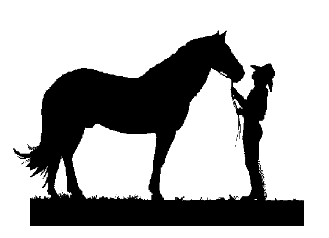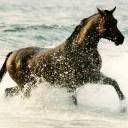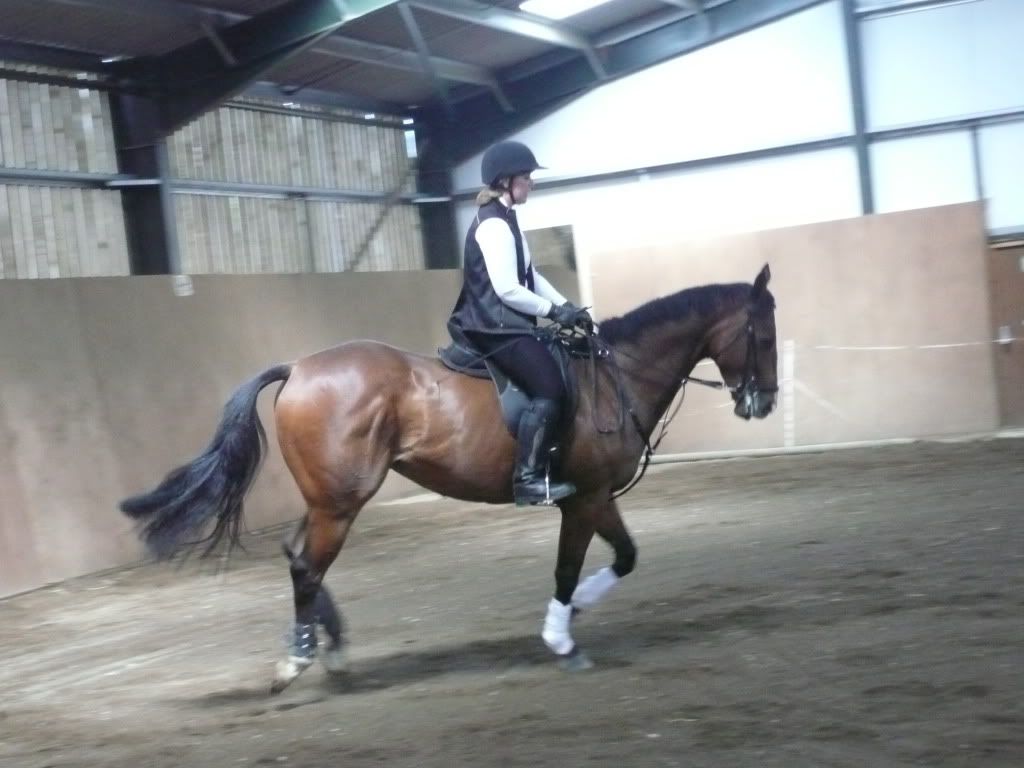suzii
Novice Willy Washer
   Officially In Love With A Young Bay Man :D
Officially In Love With A Young Bay Man :D
Posts: 882
|
Post by suzii on May 2, 2009 20:40:40 GMT
I am very confused as to this movement!
I know that it is basically cantering on the wrong leg, although there shouldn't be too much bend the wrong way otherwise it is just cantering on the wrong leg!
I thought that it wasn't a very hard movement although it isn't a basic movement and should be done on a supple, balanced horse that works in a decent outline.
I have two instructers that teach me each week alternately and I have been working on counter canter with one. This months interdressage test has got a turn across the diagonal in canter, trotting in the corner after the turn and therefore showing a few strides of counter canter. I worked on this with my other instructer on friday and people at my yard are watching (these people aren't 100% keen on this instructer mostly because the other one part runs the yard but this one is one that works at my old riding school who comes to our yard to teach me) and they afterwards were like "why are you doing that, counter canter is a highly difficult movment done a grand prix level" so now I am very confused! Especially seeing as sprite can do a few strides and he definately isn't grand prix level!
The other thing is that any suggestions for teaching it to Sprite would be much appreciated. We can do a few strides when going onto the right rein but he always tries to flying change going the other way and ends up disunited or we fall into trot. Any help in stopping this from happening would be good. We have been doing shallow loops to teach him but every time I change to rein from right to left, it doesn't work. Help?
|
|
|
|
Post by maximum on May 3, 2009 20:06:52 GMT
If you are trotting in the corner then you are not actually performing counter canter - the canter across the diagonal is not counter.
In order to perform it correctly you need a supple and balanced canter on the correct lead- its more than just cantering on the wrong leg!
Counter canter is where the rider, deliberately makes the horse canter with the right canter lead (with the right fore leading) on the left rein or vica versa.
The counter-canter is a balancing movement. The horse maintains his flexion at the poll to the outside of the circle, and the horse is positioned to the side of the leading leg.
The rider's aids for the counter canter when traveling counterclockwise are as follows: right indirect rein, right leg at the girth, and left leg behind the girth.
Your hands, in a right indirect rein position, bend the horse sliglhtly to the right; your right leg at the girth aids your hands in maintinaing the bend toward the rail; and your left leg, in a behind-the-girth position (which is about four inches farther back than normal leg position), starts and maintains the sequence of footfalls. The left leg presses the horse's haunches toward the railing at the start of each stride, so that the horse will not be able to move its right hind leg underneath itself far enough to change the sequence of its feet to the opposite lead. If you move both your hands slightly toward the rail as you approach the ends of the arena, the left rein will act as a neck rein to reinforce the pressure of your left leg and hold the horse on the counter lead.
You should feel the horse's left hind foot beneath your seat each time it strikes the ground. By monitoring this foot, you can control the sequence of the footfalls, both on the straight sides of the arena and the corners, so that the horse remains on the counter canter in a clear, three-beat sequnce. When traveling counterclockwise, the animal should be slightly bent toward the right on the straight sides of the arena and wrapped around your right leg a little tighter on the turns to prevent switching leads.
Collection is necessary to sustain the counter canter, since a horse in a long frame will lose its balance and switch leads on the corners. However, take care not to let the horse's shoulders, neck, and head become too light through collection, since lightness in the forehand makes it easy for the horse to switch from one lead to another. If you sense that the animal is preparing to change leads, press it forward and toward the rail with your leg that is toward the inside of the arena. As the horse responds by stretching its head and neck out and down, follow this movement with your hands. Allow the horse to shift its center of gravity forward enough to add a little weight to the forehand, making it less tempting to switch leads. However, do not allow the horse to add so much weight to its forehand that it loses its balance and is forced to switch.
It is not an easy movement and it should only be done once your horse has self carriage and balance- given some of your posts I am not sure you are really ready for it but never having actually seen you ride its not for me to say. Just make sure you are not just cantering on the wrong leg rather than actually doing the movement correctly.
this might be of some help
you can see how uphill the horse is and how it needs to use collection to perform the movement correctly.
|
|
|
|
Post by brigadier on May 4, 2009 17:59:06 GMT
Fab reply Maxie!
I like to use counter canter for the reason it is intended- as a balancer so if the horse is a bit one sided in canter, counter canter helps even it up, but its not for novice riders on novice horses as they will just confuse the horse. Also if attempted to early in a horse's training without a suitable rider it can irrepairably damage the work towards flying changes later on as the last thing that is needed is a horse that just pops them in to balance itself up because the rider is struggling to do it or to feel it.
Shallow loops are ok as long as done correctly and the canter towards the corner across the diagonal is a prep movement only.
The one thing I would say though for novices is that they can help a novice recognise canter lead but only when done on a schoolmaster because achieving and sustaining counter canter is hard work.
Good luck Suzii but make sure you are doing it for the correct reasons! (and your instructor is too)
|
|
suzii
Novice Willy Washer
   Officially In Love With A Young Bay Man :D
Officially In Love With A Young Bay Man :D
Posts: 882
|
Post by suzii on May 17, 2009 20:36:54 GMT
Thank you I think I'm abit clearer now! So I think what we were doing in the test isn't a proper counter canter but a movement that is slightly tricker than just cantering around the school! Anyway whatever we did seemed to be fine as we got 69.55% and came 2nd ;D yay for us  thaks for great answers as usual! |
|







 for so much hard work we thank ye!!
for so much hard work we thank ye!! thaks for great answers as usual!
thaks for great answers as usual!